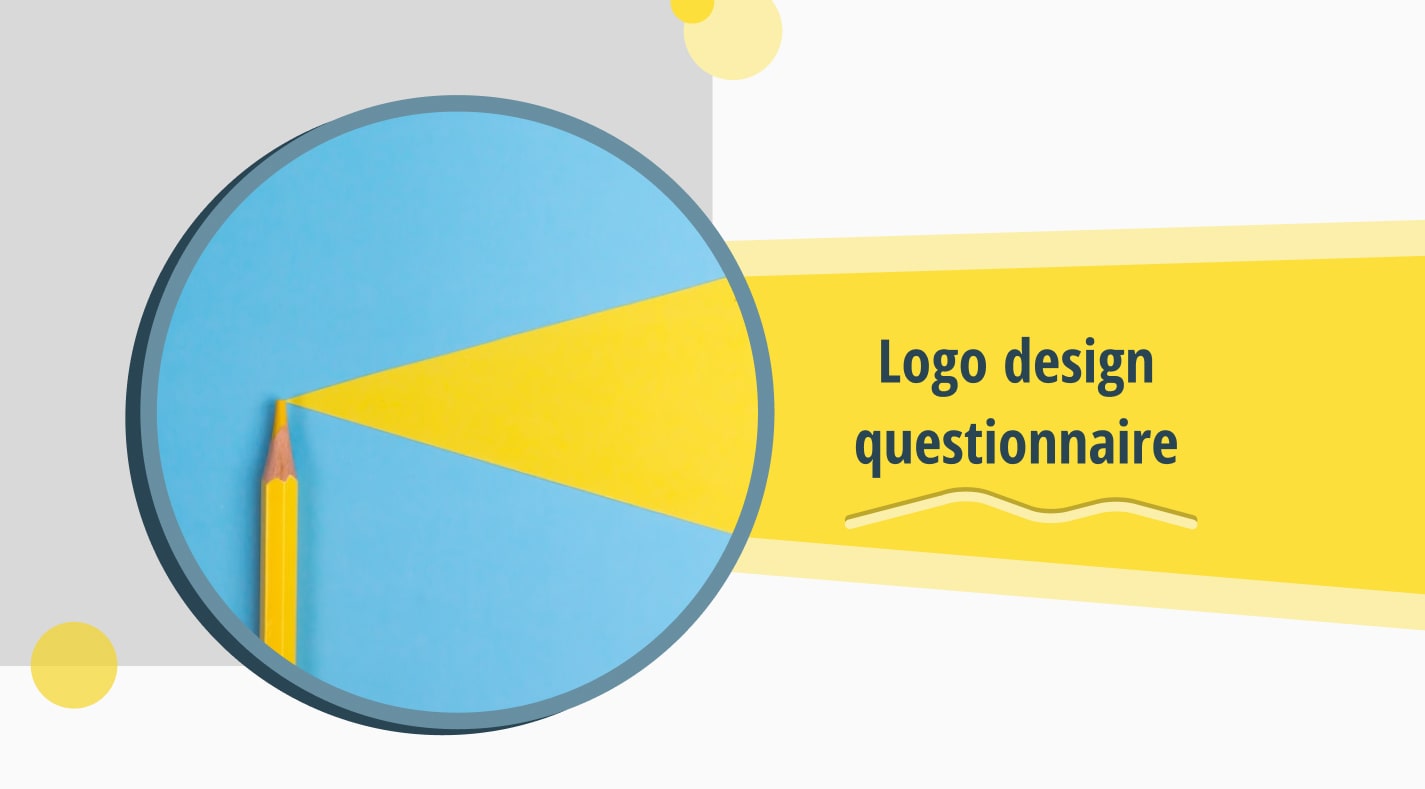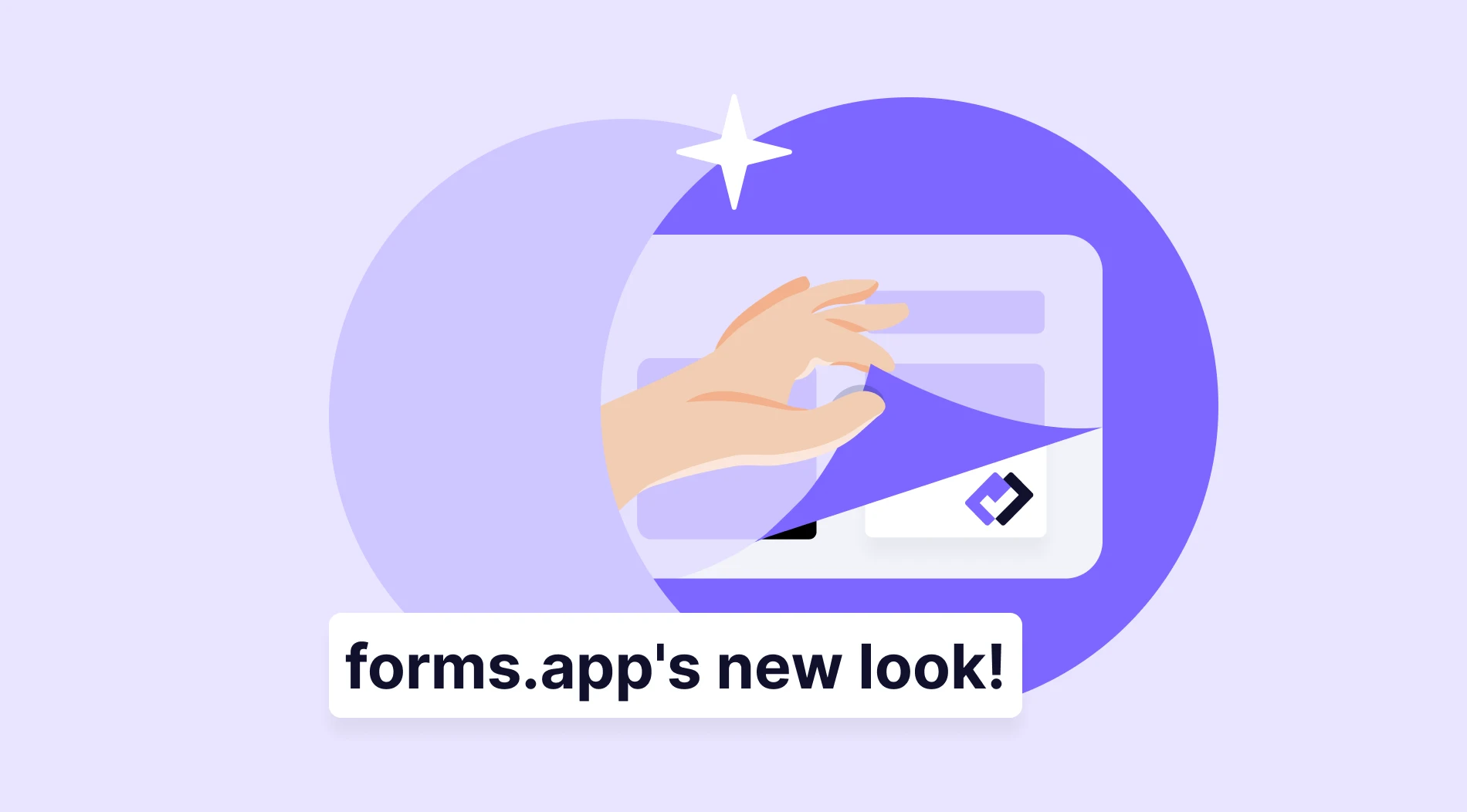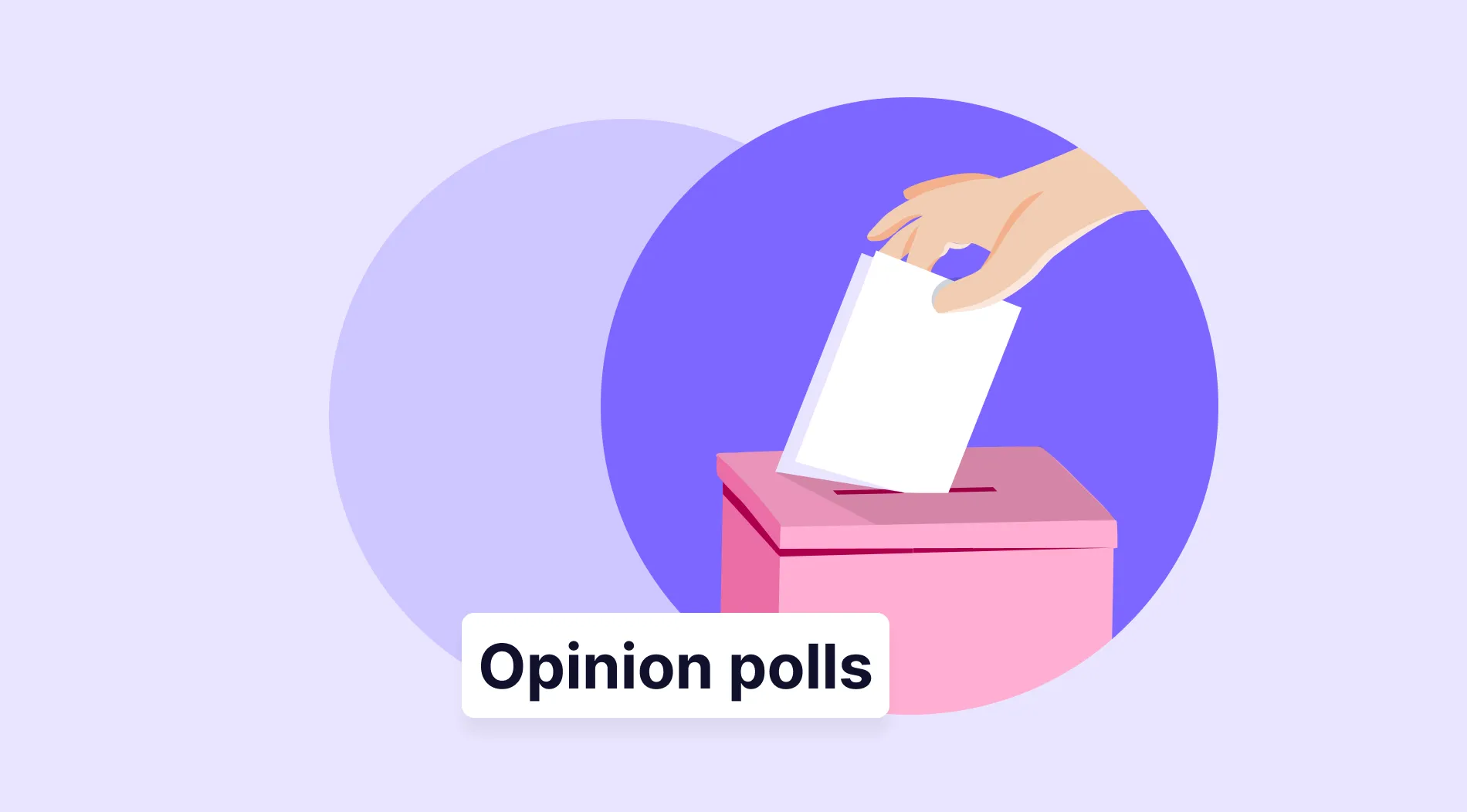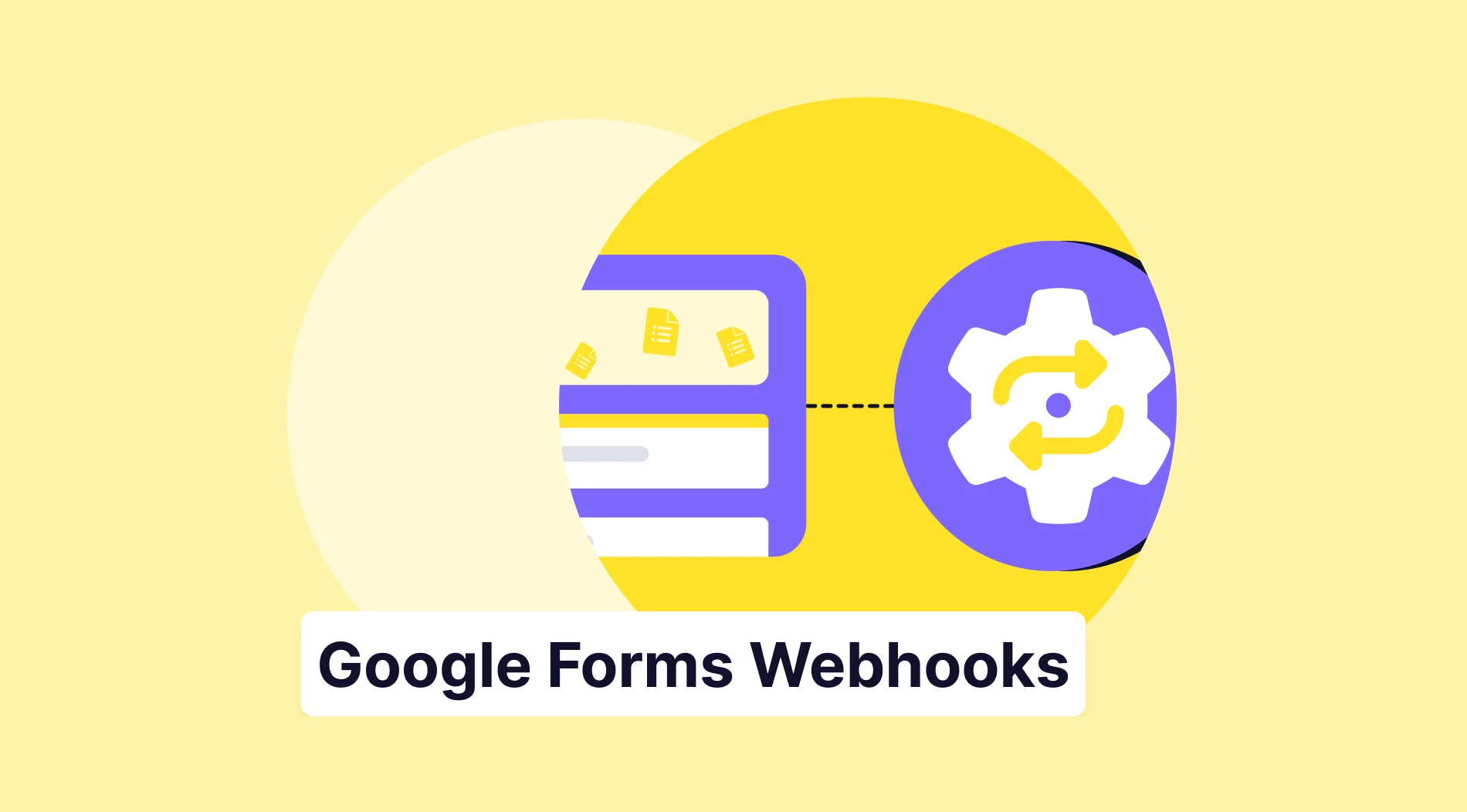Designing a logo is a complex task, even for an experienced designer. It has many aspects, from knowing about a brand to making dozens of sketches, mockup testing, feedback, and final touches.
But the most basic, though time-consuming, is preparing a helpful logo design questionnaire. The designer should ask specific questions to the business owner to get precise answers that will help design a logo.
Creating a brand identity isn’t just about making a beautiful graphic; it is about creating a logo after understanding your client’s unique branding needs so that this tiny graphic can powerfully represent the brand. You need insight into a client’s business even when using a logo maker to generate logo ideas. That’s why no professional and experienced designer goes straight to a drawing board or a computer screen to develop a logo immediately after getting the assignment. It is always a challenging task to accomplish.
The fact is that a logo designer has to go through a lengthy process before finally delivering the design. But it all starts with a one-to-one talk between the designer and the client. This talk aims at understanding the concerned brand to help the designer know what the logo should look like.
What is a logo design questionnaire?
A logo design questionnaire is a collection of questions a designer uses to obtain customer information about their brand, preferences, and logo design project needs. A logo questionnaire assists the designer in better understanding the client’s brand personality, target audience, and design preferences, which helps them create a logo that successfully delivers the brand message.
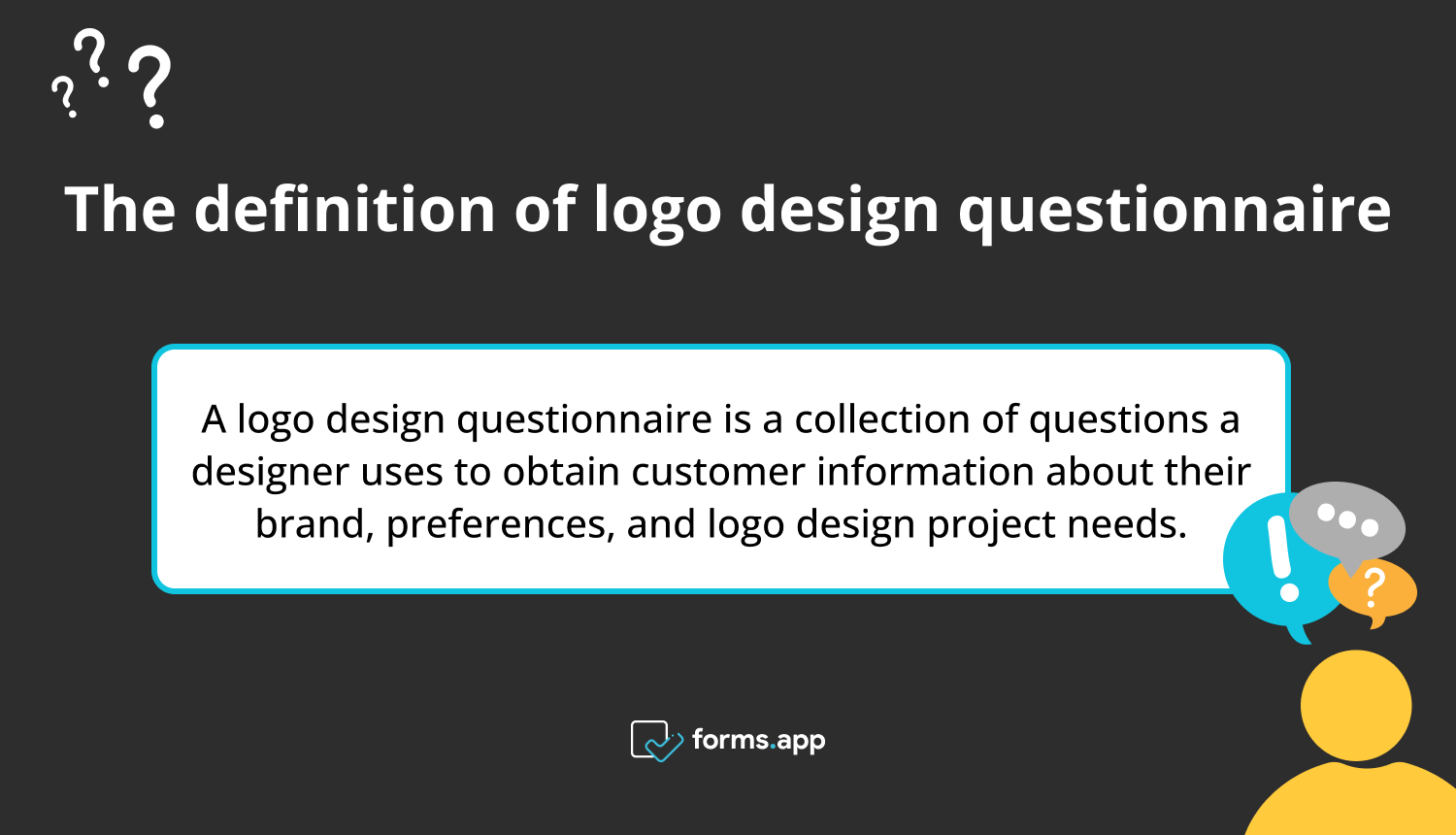
Logo design questionnaire definition
Typical inquiries include the client’s business summary, target audience, rivals, logo requirements, usage, timeframe, and budget. The questionnaire ensures that the designer and client are on the same page and that the final logo design satisfies the customer’s requirements. So, a logo design questionnaire is all about a branding questionnaire, intending to know more about a client’s new brand strategy.
Therefore, a typical logo design questionnaire aims to know specifically about the goals and objectives of a client’s business. It also asks questions regarding audience and clients, competitors, unique selling propositions, design preferences, and budget.
Why use a logo design questionnaire?
A logo design questionnaire becomes essential for both the designer and business owners. Logo designers take the help of an online questionnaire to find out some branding aspects of a business precisely. These then serve as a guideline to the designers when creating a logo. In addition, the questionnaire guides a designer in choosing the right colors, fonts, symbols, and other elements for a logo design.
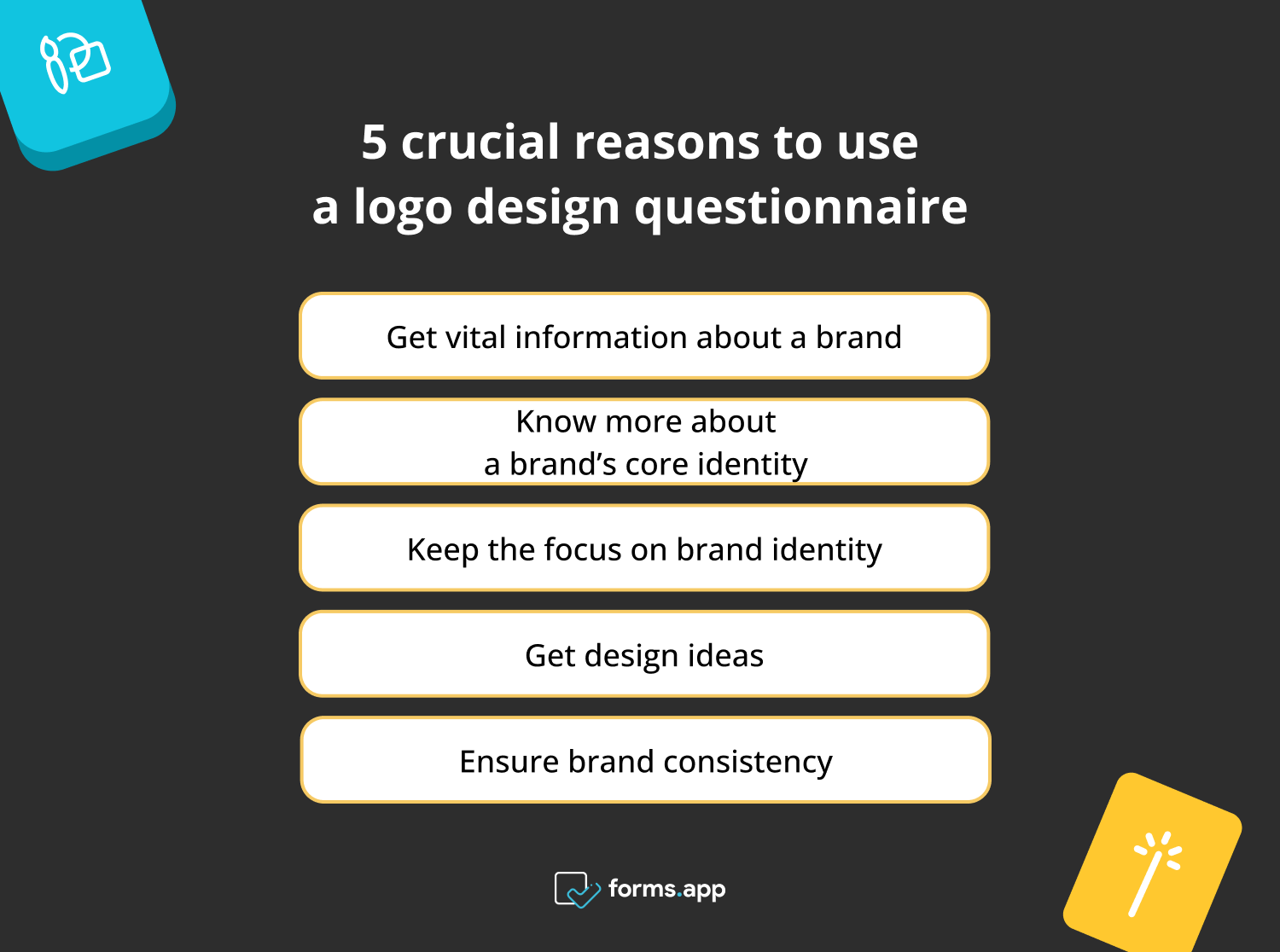
5 crucial reasons to use a logo design questionnaire
1 - Get vital information about a brand
Graphic designers must get crucial details about a client’s brand, company, and aesthetic preferences. It acts as a starting point for the entire design procedure and aids designers in producing a logo that truly reflects the client’s brand identity and values. The importance of a logo lies in its ability to capture the attention of the target audience by conveying its brand essence and personality. A well-designed logo can make a lasting impression on customers and help build trust and loyalty toward a brand.
Questions on the client’s business name, goods or services, target market, branding principles, and chosen design elements like colors, font, and symbols are frequently included in questionnaires. It could also request examples of logos the client likes and any specific technical specifications for using the logo.
2 - Know more about a brand’s core identity
While business owners know their brand inside out, still putting out some questions will help designers greatly about your unique brand identity. That helps create a powerful logo design that conveys a brand message and personality. That is why logo designers first want to know the brand insight-out.
The designers must sit with the business owners or marketers to discuss the brand involved. That is why logo designers first want to know the brand insight-out. The designers must sit with the business owners or marketers to discuss the brand involved.
3 - Keep the focus on brand identity
Questionnaires are a great way to keep a logo designer’s focus on the brand identity of a business. While designing a logo, chances are that a designer may deviate to other aspects, and the primary identity of a brand gets ignored. As a result, the logo has some unwanted elements that do not look appropriate to that particular brand’s personality.
But with a logo questionnaire in place, the designer and business owners can always bring back their focus on brand identity. They can return to the questionnaire to see if the logo’s personality matches the intended brand personality and identity.
Once you are done learning about the brand identity, it is important to ask questions that can help generate some unique design ideas.
4 - Get design ideas
When a logo designer asks the relevant brand identity questions to the brand owner, it becomes a starting point for the designer to get design ideas as well. A valuable and extensive questionnaire extracts much information about a business. But the designer asks these questions to understand a logo’s right voice and style.
If asked strategically, the questions can reveal some ignored aspects of a business that even the owner does not know much about. That aspect of a brand story sometimes becomes pivotal to starting a logo design. A well-thought-out questionnaire helps assemble all the puzzle pieces to design a meaningful logo.
A designer also wishes to create a logo design that is consistent with the many other visuals of the brand, such as a website and business cards.
5 - Ensure brand consistency
The questionnaire is not just to guide a logo designer while creating the brand identity. More than that, it is a guide to maintaining brand consistency across all marketing visuals of a business.
So, while creating a host of visuals, a business owner must ensure design consistency. Viewers lose faith in such a brand if a logo, business card, website, and brochure have different colors and fonts. A designer and business owner can return to the questionnaire to see if the new visuals align with the set brand identity.
Even when opening a new shop, the questionnaire becomes a referring point to determine its interior decor. Such brand consistency is essential to win customers’ trust.
How does a questionnaire help with brand identity?
Understand key design elements to be used: To design a logo, the designer must first understand which key elements. So, using colors, fonts, images, symbols, etc., in a visual such as a logo is paramount to designers and business owners.
A wrongly incorporated font or color can spoil the whole design, and it conveys a misconception about a brand.
Know the target audience and message: Every brand conveys a message to its target audience. Every business nurtures its specific set of customers to target them with products or services. That is why a company consciously wishes to look different from competitors using visual communication.
So, it would help if the designer approached a client with a specific list of queries when talking to the brand owner. Such a survey is a tool for the designer to understand the brand and how it should be represented through a visual such as a logo.
How to create an effective logo questionnaire
Just asking questions randomly to the client is useless since it leads to uncertainty with no directions. Instead, the purpose of your questionnaire should be to get answers that aid in creating a meaningful logo design.
1. Ask questions that reveal a business story
Set the questions so they help tell a business story, which is crucial to creating a logo. A logo designer will then know the origin of the business and its idea. You can also know the significant milestones achieved by the business.
The intention should be to gather more information about a brand’s journey. That gives clues to crafting a perfect logo.
Such questions may include queries about the nature of a business, its products or services, values, vision, and mission. Ask also about the story behind the brand, such as how the idea germinated and the inspiration behind it.
2. Know your target audience
Ensure the logo questionnaire gives you vital hints about a brand’s target audience. Ask questions that give specific demographics of the business. That helps a designer develop a customer persona to determine vital elements and styles to create a logo. So, enquire about the different backgrounds of target customers.
Find out their likings and dislikings. Such a questionnaire should include who is your target audience, what are the likes and dislikes of your customers, and how the business connects with your target customers and market.
3. Find out brand fonts, colors, and styles
Set your logo questionnaire to reveal vital information about design elements like colors, fonts, and style preferences. Ask the business owner about the colors that best suit their brand. Given a brand’s mission, offerings, and values, this question should be asked.
Questions should include knowing about colors that best describe a brand’s values, mission, and offerings. What font would be your choice in a logo, and what are your brand’s aesthetics?
4. Set queries about the competition
A logo design must stand out in its brand’s niche market. There are already many businesses operating in that market. So, your logo should be a design that looks different from competitors’ logos to indicate that it delivers unique products or services.
So, ask questions that help pinpoint the competitors and competition. For example, you can ask about the top competitors in a niche market and where the business owners find themselves in the competition. What steps does the brand take to stand out in the competition?
5. Enquire about future expansion
Ensure you find out if the business plans to diversify in other sectors. Such questions help logo designers to create logos from different perspectives. Considering the expansion plans, the designer can choose from various styles. So, the design applies even after the business diversifies.
The questionnaire should include a business’s expansion plans, where your business will be after five years, and what steps you will likely take next.
6. Add the logo questionnaire to your mood board
Once your list of logo design questions is complete, ensure it becomes part of your logo design mood board. A mood board is where you assemble all the images, design elements, stories, symbols, fonts, mascots, mottos, etc., in one place. This helps in getting an overall picture of how the logo will look.
So, based on the questionnaire, add all those elements to your mood board. You can even include competitors’ design elements and identities on the board. With this in place, you can decide how your logo will look different. Remember to add impressive works of different stylists, artists, or photographers. Adding them will give you an aesthetic sense that is the basis for creating a brand Identity.
That is also true when you go through a design brief while designing a logo to win a contest. Read the design brief carefully and submit your questionnaire to the business owners to get the details.
Top 10 Questions to include in your logo design questionnaire
Before creating a logo design, ensure you have all the basic questions prepared to ask a client. Since you cannot include all the questions, which will make it too lengthy and time-consuming, you have to be selective. So, ask only those fundamental questions that are good enough to give you a clue about the brand message, story, values, and personality.
Here is an example of a logo design survey with 10 questions
Here are 10 essential questions you need to ask
In order to make the survey creation process easier, we have gathered 10 must-ask questions for you. These basic questions can be found in our logo design survey sample. And we explain the purpose of each question in this section.
1. What does your company’s name mean, and what does it stand for?
A company name typically has some message to convey to its target customers. So, find out the meaning and message to know the brand.
2. What message do you want your logo to communicate to your target audience, and why?
Ask the client about a core message that a logo design must signal to the customers. As a designer, you can incorporate the right elements to convey the message.
3. Do you prefer any particular hues or color palettes for your logo?
This is an important question as it helps determine colors and hues. You can then think about the color when deciding on how the design should look.
4. What is the main application of your logo, such as print, the web, or merchandise?
Many logos primarily appear on websites or other online platforms. So, ask the client about where the logo will mainly be visible. You can focus your logo’s shape, colors, fonts, etc., accordingly.
5. Who are your key rivals, and how do you set your company apart?
Ask the clients about their key competitors. An answer to the question will give you an insight into how your logo will stand out from competitors’ logos and other Identities.
6. Do you already have any branding or design aspects the logo needs to incorporate?
Ask the clients about their design and branding preferences. That will guide you through creating a logo to the satisfaction of the brand owners.
7. What kind of feel do you want your logo to convey, such as modern, traditional, or playful?
Design style matters a lot in deciding the impression it will make on viewers. So, find out if clients want to convey a message through playful, traditional, or modern elements.
8. Do you have any particular pictures or symbols in mind when considering your company?
Logos typically have symbols or pictures to send out a message to consumers instantly. Find out if clients have some symbols or pictures they want to be part of their logos.
9. What traits and principles best represent your brand?
A precise answer to this question helps designers pick the right elements to represent a brand best. But you must get a pinpointed answer.
10. What is your budget and timeframe for the logo design?
Inquiries about the budget and timeframe for the logo are essential to make. You can gauge whether or not the client can pay your fees to create a logo. It also lets you know if you can spare enough time to complete the logo design.
Wrapping Up
A logo questionnaire helps a designer and business owner create a unique logo that delivers its message and values. The designer should make relevant queries to understand the business and get its story.
So, having a list of questions and their answers is crucial in picking the right colors, fonts, images, etc. But make a list of targeted questions for precise answers. In this article, we have gathered how and why you should have a logo questionnaire and ten basic questions to ask your clients.
Şeyma is a content writer at forms.app. She loves art and traveling. She is passionate about reading and writing. Şeyma has expertise in surveys, survey questions, giveaways, statistics, and online forms.
